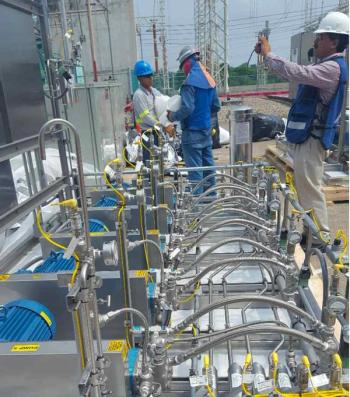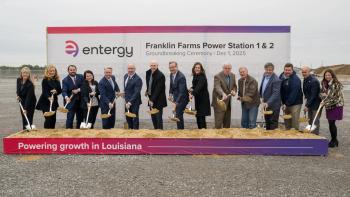
New Head for GE Oil & Gas
Lorenzo Simonelli, President and CEO of GE Oil & Gas, discusses collaboration, reorganization, turbomachinery efficiency and LNG use in transportation
How is GE doing in oil & gas?
We celebrate 20 years in oil and gas this year with a company that has annual revenues of $17 billion. Our focus is on technological improvement. Accordingly, since 2007 we have invested $14 billion in new acquisitions and see our organically grown technology, as well as technology from acquired businesses, keeping us in the forefront of the industry.
What brought about the emphasis on collaboration?
It is quite clear that an OEM cannot develop technology in isolation. We are reinforcing existing collaborations and beginning new ones so that we are firmly in touch with the needs of producers such as Chevron and Statoil. That enables us to work together to accelerate product development and pilot new approaches in the field.
Why the collaboration with Chevron?
We have created a Chevron-GE Technology Alliance which will develop and commercialize technologies and leverage our newest Global Research Center in Oklahoma — the first one dedicated to oil and gas technology. The GE Safire flow meter is one example. It incorporates metering technology that uses Swept Frequency Acoustic Interferometry. It was incubated in an alliance between Chevron and Los Alamos National Laboratory and was originally developed for defense applications. This tool is already being tested and deployed on Chevron land-based well production lines in the Western United States. Safire enables us to measure flow rates in wells on an hourly basis.
How much reorganization is ongoing?
We have launched a Downstream Technology Solutions (DTS) business to more efficiently supply equipment and services to the $10-billion refining, petrochemical, industrial and distributed gas segments. It is headquartered in Houston and offers steam turbines, blowers, distributed gas solutions, reciprocating compressors, pumps, valves and distribution systems, as well as maintenance, remote monitoring and diagnostics. Subject to regulatory approval, the planned addition of Cameron’s high-speed reciprocating compressor unit (used in the development of shale oil and gas fields) will become part of DTS.
What can you tell us about ReliabilityMax?
It is a predictive maintenance solution that increases the reliability of turbomachinery beyond industry standards. Deployed at a new coal seam gas-to-LNG facility on Curtis Island off the east coast of Australia, it is the first application of this technology for aeroderivative gas turbines used in LNG. The ongoing maintenance agreement encompasses 15 PGT25+G4 aeroderivative gas turbines, 28 centrifugal compressors, gearboxes, generators and all auxiliaries, as well as remote monitoring and diagnostic services.
ReliabilityMax is part of our Predictivity Package. The ability to predict-and-prevent service and maintenance issues is an example of a connected network of technology, data and experts known as the Industrial Internet. The introduction of advanced sensors and analytics is bringing about a revolution in technological innovation and operational efficiency.
The whole point of the Industrial Internet is to raise production, lower unplanned downtime and extend the life of mature assets around the world. You can look upon this as the meshing of the digital and physical worlds. By putting software into turbines and compressors, you can achieve a jump in efficiency.
What else is new and exciting?
Over 25% of global gas investment over the next decade will be in transport solutions. This will mean that gas networks will be able to increase their coverage zones. Consequently, gas will emerge as a major transportation fuel. That’s why we are pushing forward smaller-scale gas distribution solutions such as LNG in a Box and CNG in a Box. You can look upon these as virtual pipelines that give consumers and businesses faster and more flexible access to gas. We also anticipate that oil and gas from unconventional sources will increase by 50% between now and 2020.
What is happening with the single-stage ICL?
Total S.A. is installing two Integrated Compressor Line (ICL) units in Bolivia at a new compressor station at the Incahuasi project in the Ipati-Aquio Block. ICL units provide greater operational and environmental benefits, and Total has said they would like to deploy them whenever it’s feasible in upstream applications. The units are driven by high-speed electric motors rather than gas turbines and generate zero emissions. This order brings our total to 26 ICL units sold globally.
Newsletter
Power your knowledge with the latest in turbine technology, engineering advances, and energy solutions—subscribe to Turbomachinery International today.





